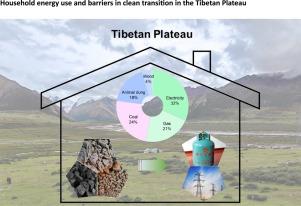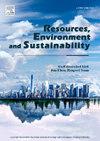青藏高原家庭能源使用和清洁转型的障碍
IF 12.4
Q1 ENVIRONMENTAL SCIENCES
引用次数: 0
摘要
青藏高原是世界上海拔最高的地区,尽管该地区拥有巨大的可再生能源潜力和持续的经济增长,但传统生物质燃料的低效燃烧对当地生态系统和全球气候变化都造成了影响。然而,该地区对清洁家用能源的利用情况以及支持其持续使用的推动因素仍未进行充分探索。通过地区住户调查和燃料称重活动,我们发现城市地区一年中有 85% 以上的时间都在使用天然气和电力等现代清洁能源,而农村地区只有 25%。约 398 万居民仍主要依靠传统固体燃料进行日常烹饪和/或取暖。能源不平等现象严重,烹饪和取暖的基尼系数分别为 0.65 和 0.55。尽管不同收入群体在采用清洁能源方面的差距相对较小,但清洁能源的可获得性和可负担性有限,严重制约了该地区对清洁能源的利用。这使得性别、年龄和教育水平等家庭特征的影响最小化,并削弱了收入增加对加快清洁烹饪做法的影响。研究结果突出表明,青藏高原迫切需要有针对性的居民能源干预措施和激励机制,以促进清洁能源转型,因为如果不付出巨大努力,到 2030 年实现清洁能源普及是不可能的。本文章由计算机程序翻译,如有差异,请以英文原文为准。

Household energy use and barriers in clean transition in the Tibetan Plateau
The inefficient combustion of traditional biomass fuels in the Tibetan Plateau, the world’s highest region, impacts both local ecosystems and global climate change despite the substantial renewable energy potential and ongoing economic growth of the area. However, the utilization of clean household energy sources and the enablers supporting their sustained use in this region remain underexplored. Through the regional household survey and fuel-weighing campaign, we observed that clean modern energy sources, such as gas and electricity, were used for over 85% of the year in urban areas but only 25% in rural areas. Approximately 3.98 million residents still predominantly rely on traditional solid fuels for daily cooking and/or heating. A substantial energy inequality was identified, with Gini coefficients of 0.65 and 0.55 for cooking and heating, respectively. Despite the disparity in clean energy adoption across income groups being relatively small, the regional utilization of clean energy is severely constrained by limited accessibility and affordability. This has minimized the impact of household characteristics, such as gender, age, and education level, and diminished the effect of rising incomes on accelerating clean cooking practices. The findings highlight the urgent need for targeted residential energy interventions and incentives to promote a clean energy transition in the Tibetan Plateau, as achieving universal clean energy access by 2030 is unlikely without significant efforts.
求助全文
通过发布文献求助,成功后即可免费获取论文全文。
去求助
来源期刊

Resources Environment and Sustainability
Environmental Science-Environmental Science (miscellaneous)
CiteScore
15.10
自引率
0.00%
发文量
41
审稿时长
33 days
 求助内容:
求助内容: 应助结果提醒方式:
应助结果提醒方式:


